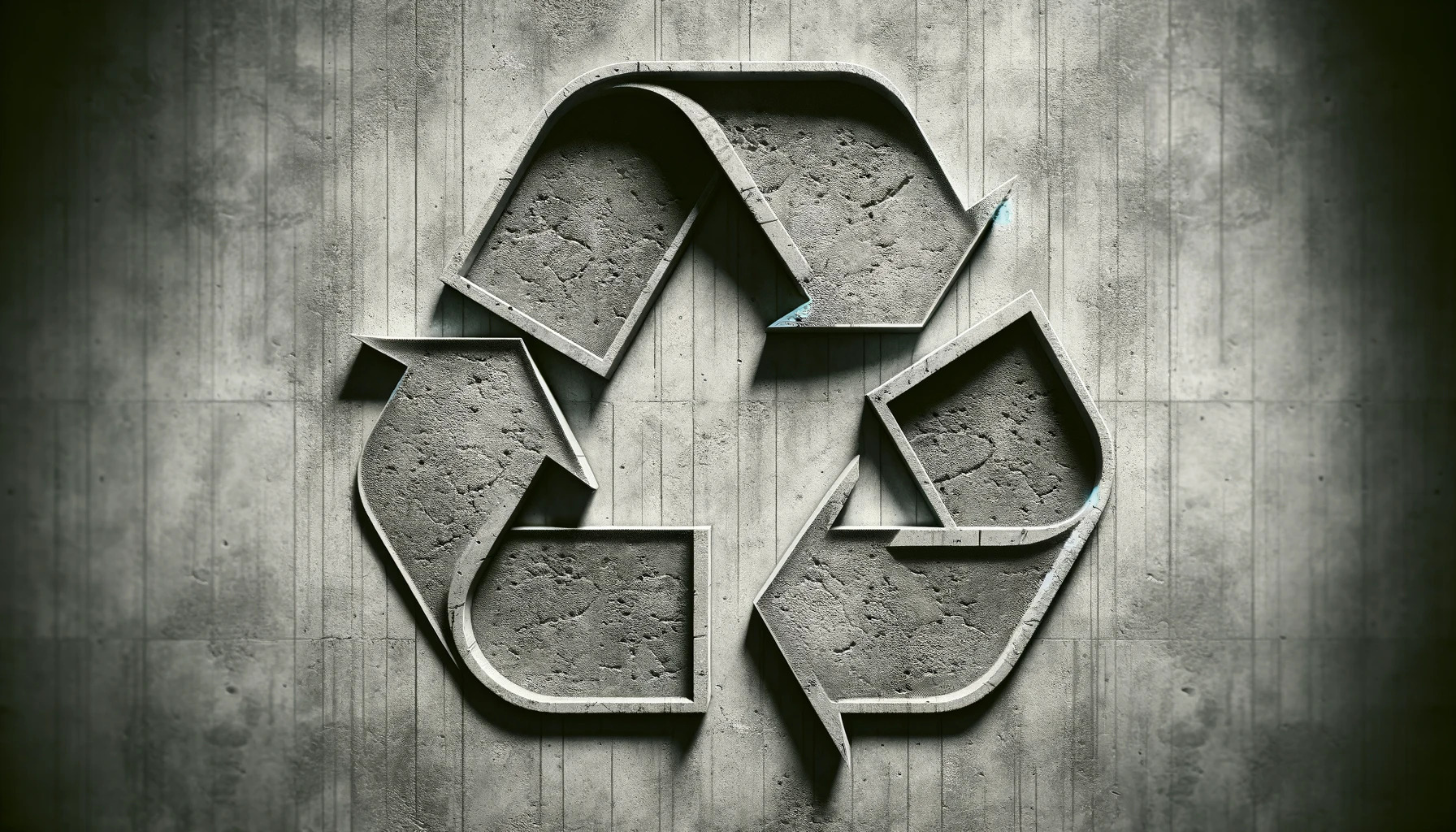BUSINESS
Sustainable Construction Companies: 7 Steps to Go Green

By adopting green practices, they can reduce their impact on the environment and promote a healthier planet for future generations.
Going green not only benefits the environment but also offers long-term cost savings. Sustainable practices can improve efficiency, reduce operational costs, and enhance company reputation.
As more clients demand eco-friendly buildings, adopting sustainable practices can also provide a competitive edge. Here are seven actionable steps construction companies can take to become more sustainable.
1. Use Sustainable Building Materials
One of the fundamental steps toward sustainable construction is the selection of eco-friendly building materials. Traditional construction materials like concrete and steel have a high environmental impact due to their energy-intensive production processes. Switching to sustainable materials can significantly reduce this impact.
Firstly, consider using recycled materials such as recycled steel, reclaimed wood, and bamboo. These materials not only reduce the demand for new raw materials but also divert waste from landfills. For example, reclaimed wood can add a unique aesthetic to a building while preserving natural resources. Bamboo is a rapidly renewable resource that can be harvested without causing long-term environmental damage.
In addition, opt for low-VOC (volatile organic compounds) paints and adhesives. Traditional paints and adhesives release harmful chemicals into the air, which can affect indoor air quality and harm workers’ health. Low-VOC alternatives are better for both the environment and human health.
Finally, sourcing materials locally can reduce transportation emissions. Locally sourced materials support the local economy and reduce the carbon footprint associated with long-distance transportation.
2. Implement Energy-Efficient Practices
Energy efficiency is a cornerstone of sustainable construction. By reducing energy consumption, construction companies can lower their carbon footprint and operational costs.
Investing in energy-efficient machinery and equipment is a good starting point. Modern equipment often includes energy-saving features that reduce power consumption without compromising performance. For example, energy-efficient cranes and excavators can significantly lower fuel use on construction sites.
Utilizing renewable energy sources like solar or wind power on-site can further enhance energy efficiency. Solar panels can be installed on-site offices or even integrated into the construction process to power tools and machinery. Wind turbines can provide a supplemental energy source, especially in areas with consistent wind patterns.
Incorporating energy-efficient designs into the construction process is also crucial. This includes using proper insulation, high-performance windows, and energy-efficient lighting systems. Proper insulation reduces the need for heating and cooling, while high-performance windows prevent heat loss in the winter and heat gain in the summer. Energy-efficient lighting, such as LED lights, uses significantly less electricity compared to traditional lighting options.
3. Use Smart Sensors for Concrete Optimization
Concrete production is a major source of carbon emissions in the construction industry. However, smart technology can help mitigate this impact. Using smart sensors to optimize the concrete mixture can reduce the amount of cement needed, leading to lower emissions.
Smart sensors monitor the concrete curing process in real-time, providing data on the optimal mix of materials. These sensors adjust the mixture to achieve the required strength and durability with less cement. This not only reduces the environmental impact but also lowers material costs.
For example, sensors can detect the exact moisture content needed, adjusting water and cement ratios to minimize waste. This precise control ensures that concrete meets quality standards while being more environmentally friendly.
4. Reduce, Reuse, and Recycle Waste
Waste management is a critical aspect of sustainable construction. Construction sites generate a significant amount of waste, and implementing waste management practices can help reduce this burden on the environment.
Before starting a project, establish a comprehensive waste management plan. This plan should outline how waste will be handled, including sorting, recycling, and disposal methods. Assign specific areas on-site for different types of waste, such as metal, concrete, and cardboard.
Recycling materials is another effective way to manage waste. Metals like steel and aluminum can be recycled multiple times without losing their properties. Concrete can be crushed and reused as aggregate for new construction projects. Cardboard and other packaging materials can be recycled into new products.
Reusing materials from demolition projects is also beneficial. Instead of sending old materials to landfills, salvage what can be reused. For instance, bricks, tiles, and wood beams can be repurposed in new constructions. This not only reduces waste but also conserves resources and saves money.
5. Incorporate Green Building Certifications
Green building certifications, such as LEED (Leadership in Energy and Environmental Design) or BREEAM (Building Research Establishment Environmental Assessment Method), set standards for sustainability in construction. Pursuing these certifications can guide companies in implementing green practices and achieving recognized benchmarks.
LEED certification focuses on various aspects of sustainable building, including energy efficiency, water conservation, and reducing emissions. Buildings are rated based on their environmental performance, with higher ratings indicating greater sustainability. Achieving LEED certification can enhance a company’s reputation, attract eco-conscious clients, and potentially qualify for financial incentives.
BREEAM assesses building performance and environmental impact throughout a building’s lifecycle, from design to demolition. It covers a wide range of criteria, including energy use, health and wellbeing, and materials. BREEAM-certified buildings are recognized for their high standards of sustainability and can command higher market values.
6. Implement Water Conservation Practices
Water is a vital resource that should be conserved, especially in construction, where water use can be extensive. Implementing water-saving practices can significantly reduce the environmental impact of construction projects.
Using water-efficient fixtures and appliances on construction sites is a straightforward way to conserve water. Low-flow faucets, toilets, and showers can reduce water use without compromising functionality. These fixtures are designed to use less water while maintaining the necessary pressure and flow rates.
Collecting and reusing rainwater for non-potable uses, such as dust control and irrigation, is another effective strategy. Rainwater harvesting systems can capture and store rainwater, which can then be used for various on-site activities. This reduces the demand for fresh water and can help manage stormwater runoff.
Implementing xeriscaping, which uses drought-tolerant plants to minimize water use, is also beneficial. Xeriscaping involves selecting plants that require little to no irrigation once established. This not only conserves water but also creates low-maintenance landscapes that are ideal for construction sites.
7. Promote Sustainable Transportation
Transportation is a significant source of emissions in the construction industry. Promoting sustainable transportation options can help reduce this impact and contribute to overall sustainability goals.
Encouraging carpooling or the use of public transportation among workers can significantly reduce the number of vehicles on the road. This not only lowers emissions but also decreases traffic congestion around construction sites. Providing incentives, such as reserved parking spots for carpoolers or subsidized public transit passes, can encourage workers to choose these options.
Investing in electric or hybrid vehicles for the company fleet is another effective strategy. These vehicles produce fewer emissions compared to traditional gasoline-powered vehicles and can help reduce the company’s carbon footprint. Additionally, electric vehicles can be charged using renewable energy sources, further enhancing sustainability efforts.
Using local suppliers to reduce transportation distances and emissions is also crucial. Sourcing materials and services from nearby locations minimizes the environmental impact associated with long-distance transportation. This not only reduces emissions but also supports the local economy and can lead to faster project completion times.
BUSINESS
Breast Milk Refill After Pumping: How Long It Takes and What Affects It

Breastfeeding moms often wonder how long it takes for their milk supply to “refill” after a pumping session. This is a common concern, especially for those managing multiple daily pumpings, building a freezer stash, or trying to maintain supply.
Understanding how the breast milk refill process works can empower you to plan more effectively, reduce anxiety, and maximize your milk output.
How Breast Milk Production Works
Breast milk production operates on a supply-and-demand system. The more milk you express or your baby consumes, the more your body will produce. This cycle is regulated by two key hormones:
- Prolactin, which signals milk production after removal
- Oxytocin, which controls the let-down reflex
Milk production is a continuous process. Even if your breasts feel empty after pumping, they are still producing milk—just at a slower rate.
Understanding the Milk Refill Cycle After Pumping
Once you finish a pumping session, your breasts immediately begin replenishing milk. However, the refill isn’t instant and happens gradually. The cycle depends on:
- How well the breasts were emptied during pumping
- How often you pump or breastfeed
- Your hydration and nutrition status
- Your body’s individual milk-making capacity
For a more in-depth explanation of how the process works, you can check this helpful guide on breast milk refill.
Average Refill Time
On average, here’s what most moms experience:
- 20–30 minutes: Some milk is already available again
- 1–2 hours: Breasts begin to feel noticeably fuller
- 4+ hours: Full milk replenishment (especially if skipped a session)
These times vary depending on your body and routine. If you pump again before a full refill, you may get less volume—but this frequent removal can still support supply long term.
Signs Your Breasts Are Refilling
While there’s no exact way to see milk filling up, these signs may indicate that your breasts are refilling
- Feeling of fullness or heaviness
- Tingling or pins-and-needles sensation (let-down reflex)
- Breast leakage or spontaneous let-down
- Visible swelling or engorgement
- Change in breast shape or firmness
Some women feel these signs more strongly than others. Trust your body’s signals and your pumping patterns.
Tips to Support Milk Refill
Want to encourage quicker and more efficient refills? Try these proven strategies:
1. Hydrate Consistently
Aim for at least 8–10 cups of water a day. Dehydration slows down milk production.
2. Fuel Your Body with Nutritious Foods
Focus on foods rich in protein, healthy fats, and complex carbs—like oatmeal, leafy greens, eggs, salmon, and avocado.
3. Don’t Skip Sessions
The more regularly you empty your breasts (whether nursing or pumping), the faster your body responds by making more.
Common Concerns and Myths
Let’s bust a few myths about breast milk refill that cause unnecessary stress:
“I need to wait until my breasts feel full before pumping again.”
No—you should pump or feed regularly, not just when you feel full. Waiting can signal your body to produce less.
“Pumping more often will drain me.”
Your body responds to demand. Pumping more often—especially in the early weeks—helps increase long-term supply.
“Once my breasts are empty, that’s it until hours later.”
Breasts are never truly empty. Milk is made continuously, and frequent removal speeds up production.
“My milk supply is low because I’m not leaking.”
Leaking is not an accurate measure of supply. Some women never leak but produce plenty.
Sample Pumping Schedule to Maximize Refill
Especially for exclusive pumpers or working moms, timing can help with consistent refill:
- Pump every 2–3 hours during the day
- Pump once between 1:00–3:00 a.m. (prolactin levels are highest)
- Don’t go more than 4 hours without a session during the day
When to Seek Help
If your breasts aren’t refilling, or your output keeps decreasing despite consistent effort, consider:
- Talking to a lactation consultant
- Getting screened for hormonal imbalances or thyroid issues
- Ruling out issues with pump parts (valves, flanges, suction strength)
Your journey is personal—and sometimes professional support is the best way to stay on track.
Conclusion
The breast milk refill process is both automatic and responsive to how you manage your feeding or pumping routine. While it’s natural to wonder if your supply is enough, rest assured that your body is capable of replenishing—especially when supported with proper care, timing, and nutrition.
BUSINESS
The Smart Canadian’s Guide to Lowering Insurance Costs

Insurance is a necessity for peace of mind, but it can also make a significant dent in your budget. Whether it’s auto, home, or life insurance, your premiums can add up quickly. But here’s the bright side: there are effective ways to minimize your insurance costs without sacrificing coverage. Find expert Canadian insurance solutions with Sharp Insurance to get started on smarter savings today.
This guide is designed to help Canadians take control of their insurance expenses. By understanding how insurance pricing works and adopting a few smart strategies, you can save hundreds (or more) annually.
Shop Around and Compare Quotes
One of the simplest yet most overlooked strategies for lowering your insurance costs is shopping around. Not all insurance providers are created equal, and their pricing structures can vary significantly based on your profile, location, and coverage needs.
Use Online Comparison Tools
Websites like Ratehub or LowestRates.ca make it easier than ever to compare insurance premiums from multiple providers. These tools allow you to input your details once and receive a variety of personalized quotes. This quick process can reveal savings opportunities you may never have guessed existed.
Get Quotes from Multiple Providers
Don’t just stop at online tools. Contact insurance providers directly and ask for quotes. Some insurers may offer loyalty discounts or exclusive deals for prospective customers who inquire directly. Make sure to compare the coverage, not just the price, to ensure you’re getting the best value.
Pro Tip
Check reviews and rating platforms like the Better Business Bureau to ensure the provider not only offers competitive rates but also great service.
Increase Your Deductible
A deductible is the amount you agree to pay out-of-pocket before your insurance kicks in to cover the rest. Increasing your deductible can reduce your premium, sometimes significantly.
How Deductibles Work
For example, if you opt for a $1,000 deductible instead of $500, your monthly or annual premium will often decrease. Why? Because you’re agreeing to take on a higher portion of the risk.
Weighing the Pros and Cons
While opting for a higher deductible lowers your premium, it’s crucial to ensure that you have enough emergency savings in case you need to pay that deductible.
Consider this:
- Pros: Lower monthly premiums, potential long-term savings.
- Cons: Higher upfront costs in case of an incident.
Evaluate your financial situation and risk tolerance before increasing your deductible.
Bundle Your Insurance Policies
Bundling your insurance policies—such as auto, home, and life insurance—with the same provider is another excellent way to save. Many insurers offer discounts when you consolidate multiple policies with them.
Benefits of Bundling
- Combined discounts: Bundling can save you up to 25% on your premiums.
- Simplified management: Dealing with one provider is more convenient than juggling multiple policies from different companies.
- Extra perks: Some insurers offer enhanced customer service or loyalty rewards for bundled policies.
How to Find the Best Bundling Deals
Start by asking your current providers about bundling options. Then compare their offers with competitors to ensure you’re receiving the maximum discount. Remember to confirm that you’re not losing any important coverages in the process of bundling.
Improve Your Credit Score
Did you know that your credit score can impact your insurance premiums in Canada? Insurers often use your credit score as an indicator of how “risky” you might be to insure. The better your score, the lower your premiums may be.
The Connection Between Credit Scores and Insurance Rates
Insurance companies view individuals with higher credit scores as more responsible and less likely to file frequent claims. While not all provinces allow the use of credit score assessments (Quebec and Newfoundland and Labrador, for example, restrict this practice), in most provinces, keeping a good credit score is advantageous.
Tips for Improving Your Credit Score
- Pay bills on time: Late payments negatively affect your score.
- Keep your credit utilization low: Aim to use less than 30% of your credit limit.
- Monitor your credit report: Check for errors or inaccuracies that could be dragging down your score.
Improving your credit score takes time, but the financial benefits go beyond insurance savings, impacting other areas of your financial life as well.
Take Advantage of Discounts
Many insurance providers offer a variety of discounts that customers aren’t often aware of. By knowing what to look for, you may unlock significant savings.
Available Discounts
- Student discounts: Young drivers in school can access reduced auto insurance rates.
- Senior discounts: Retirees and seniors typically qualify for discounts on auto and home insurance.
- Professional discounts: Belong to a union or professional organization? You might be eligible for specific group discounts.
How to Inquire About and Apply for Discounts
Be proactive! Call your insurance provider and ask for a full breakdown of discounts you qualify for. Additionally, ensure you’ve provided up-to-date details about your current circumstances, as this can often reveal overlooked savings opportunities.
Pro Tip
Participate in telematics programs if your auto insurer offers them. These programs track your driving habits and may reward you with lower rates for safe driving.
Taking Control of Your Insurance Costs
Finding ways to reduce your insurance expenses doesn’t have to be complicated. By shopping around, reevaluating your deductible, bundling policies, improving your credit score, and taking advantage of discounts, you can enjoy significant savings while maintaining excellent coverage.
Remember that being proactive and informed is key to success. Set a reminder each year to review your insurance policies and explore opportunities for additional savings.
At the end of the day, every dollar saved on insurance is a dollar you can invest elsewhere in your future. Take control of your coverage today and ensure your hard-earned money is working as efficiently as possible.
BUSINESS
When To Call for AC Repair vs. Regular Maintenance

Most problems of an air conditioning system may seem minor at first, but can evolve into more severe disruptions when left unresolved. Preventive maintenance is a service to keep the system in working condition through regular checkups. Repair is needed when the unit exhibits signs of mechanical or electrical failure. Here is when to schedule for AC repair versus regular maintenance:
Temperature Variations
Restricted airflow, failing motors, or internal refrigerant imbalances often cause uneven cooling. Although maintenance clears surface-level buildup and aids airflow, persistent temperature variation in different rooms may indicate faulty internal controls or deteriorated circulation systems. The parts responsible for distributing air evenly might have become misaligned or are no longer working correctly. Such fluctuations often persist as performance regulators within the system start to fail. When this happens, a professional may need to replace a part. When such symptoms occur, professional AC repair helps to detect underlying faults, recalibrate settings, or replace worn-out components.
Persistent Airflow Issues
Even after a system has undergone routine maintenance, airflow issues may still be present. Decreased airflow may occur due to electrical irregularities affecting the blowers’ functioning, pressure imbalances, or deteriorating fan performance. Although regular service may involve cleaning and filter replacement, airflow limitations due to internal damage or system wear may go unaddressed. These conditions may worsen when the blower assembly becomes weak, resulting in the unit having less capacity to force air through the vents. Air passage can also be disrupted by disconnected or damaged internal seals, which lowers overall efficiency. A professional will diagnose and repair the issue.
Unusual Cycling Behavior
Cooling systems should cycle at a normal rate. Internal sensors or electrical control elements may be compromised when they are turned on and off too often. Alternatively, when a unit fails to cycle off, the root cause may be temperature control errors or a cooling load imbalance. Short cycling and long operation wear the system. Relays and communication boards that control these cycles may lose calibration or deteriorate over time. Professional repair is necessary to diagnose and address the underlying cause, avoiding further degradation and restoring proper cycling functionality.
Unusual Noises
The noise from the unit may increase as internal parts wear out or become misaligned. Rattling is usually an indication of loose mechanical components, and buzzing sounds may occur due to power fluctuations or faulty electrical components. Maintenance may involve general inspection or oil application, but not opening assemblies or replacing damaged parts. When such noises are repeated, subsequent use of the system may cause further internal damage. This is when you should get targeted mechanical repair to promote smooth operation and avoid cascading system failure.
Drainage Problems and Moisture Accumulation
The presence of moisture around the air conditioning unit may indicate drainage failure. A blocked condensate drain line is a common reason, as it prevents water from leaving the system. Dust, algae, and debris can accumulate over time within the line, eventually forming a clog that causes water to pool around the unit. When a drip pan cracks or shifts out of position, it cannot collect and channel condensation properly, leading to pooling.
If the evaporator coil freezes and thaws due to internal components, the drainage system can be overwhelmed by excess water. These problems go beyond routine servicing and require corrective action to restore proper moisture management. Repairs must aim to clear blocked drains, seal or replace broken parts, and restore system balances to prevent permanent damage and enhance reliability.
Hire an AC Repair Company
Although routine maintenance helps to maintain functionality and efficiency, it has its limits. Repair is required when performance is disrupted by mechanical, electrical, or control-based faults. Select an experienced provider in both routine maintenance and targeted repairs. An experienced team will not only keep the system clean and calibrated but will also identify when deeper intervention is required. Hire an AC repair company to access timely interventions and expert solutions.
-

 GENERAL2 years ago
GENERAL2 years agoDiscovering the Artistic Brilliance of Derpixon: A Deep Dive into their Animation and Illustration
-

 Posts2 years ago
Posts2 years agoSiegel, Cooper & Co.
-

 FASHION2 years ago
FASHION2 years agoThe Many Faces of “λιβαισ”: A Comprehensive Guide to its Symbolism in Different Cultures
-

 Lifestyle2 years ago
Lifestyle2 years agoPurenudism.com: Unveiling the Beauty of Naturist Lifestyle
-

 Lifestyle2 years ago
Lifestyle2 years agoBaddieHub: Unleashing Confidence and Style in the Ultimate Gathering Spot for the Baddie Lifestyle
-

 HEALTH1 year ago
HEALTH1 year agoTransformative Health Solutions: Unveiling the Breakthroughs of 10x Health
-

 Entertainment2 years ago
Entertainment2 years agoGeekzilla Podcast: Navigating the World of Pop Culture, Gaming, and Tech
-

 Lifestyle11 months ago
Lifestyle11 months agoSandra orlow: Unraveling the Story of an Iconic Figure
